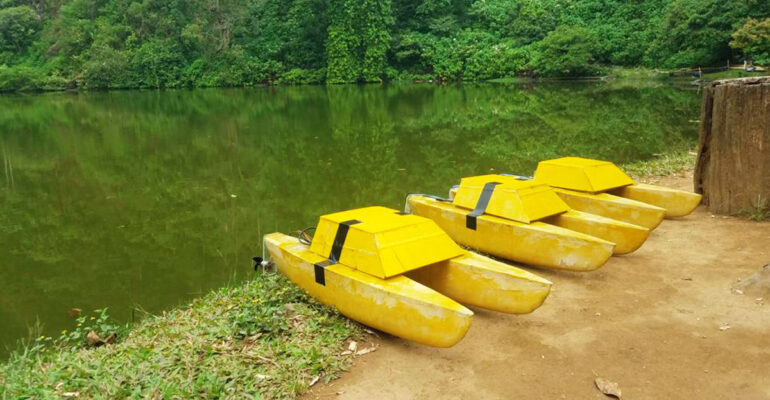Lake Pollution Gets Alarming, IPB University Students Utilize Intelligent Sampling Ships

Pollution in waters can threaten the biota sustainability in it. The contamination of the lake has caused ecosystem disturbance to death of fishes. This is the background of Chaidar Aji Nugroho, Ahmad Vidura, and Muhammad Rizky Rahman from the Department of Marine Sciences and Technology, Faculty of Fisheries and Marine Sciences (FPIK) IPB University conducting research related to water quality sampling.
The team named the research intelligent sampling. Intelligent sampling is a method of retrieving water quality data using three coordinating autonomous ships called swarm-ship. Chaidar as Team Leader explained that in addition to surveying lake water quality, this technology could be further developed as in the field of defense and security.
This system uses the swarm concept or can be referred to as the concept of mutual cooperation (gotong royong), where there are several autonomous ships that carry out the mission together. The ships can communicate with each other so that they can be integrated with each other and are able to form formations that make it easier for them to complete the mission.
“We only need to command one ship to lead the mission through our program, then that ship will manage other ships’ movement as the followers. The mission we command is recording the water quality data in parallel formation, thus making the data becomes more precise and is retrieved faster. Besides saving time, this method can create more accurate spatial distribution,” he said.
Through the idea of intelligent sampling, the team supervised by Prof. Dr. Ir. Indra Jaya MSc was able to get funding from the Ministry of Research, Technology and Higher Education (Kemenristekdikti) in the Student Creative Program in Research (PKMPE) in 2019. This tool is equipped with two sensors to see water quality.
“In this PKMPE we use two sensors; temperature and color sensors to determine phytoplankton. If you want to add other sensors such as dissolved oxygen/DO, turbidity, salinity and others, it will be very possible. The results obtained is water quality distribution (temperature and phytoplankton) with more precise grid density and faster retrieval,” he said.



